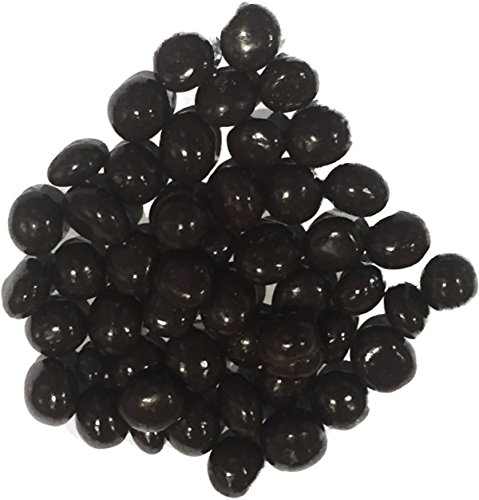The Benefits and Side Effects of Coffee Beans
Coffee beans can provide a wide range of health benefits, such as improved cognitive function and lower risks of heart disease. Too many beans can cause anxiety and insomnia.
The flavor of coffee is affected by the soil, elevation, and cultivation methods. The species of plant can also influence its taste.
Origin
Coffee beans are the seeds of a tropical evergreen plant. They are ground and roasted to create the most widely consumed
bulk coffee beans beverage that is enjoyed all over the world. Coffee is the third most-loved drink in the world, and is one of the most profitable commodities on the planet. It is well-known for its energy-boosting effects due to the alkaloid caffeine.
The most widely-respected origin story of coffee is of an Abyssinian goat herder known as Kaldi. He noticed that his animals were more active after eating berries from certain plants. The berries were found to be energizing, and he began cultivating the plant.
In the 16th century, coffee was transported eastward to the Arabian Peninsula, where it was grown in the Yemeni area. The first
Good Coffee Beans houses were opened. These establishments were from the taverns in Europe and focused on deep discussion and fast-paced thinking.
Today most of the coffee produced in the world comes from two types of plant known as Arabica and Robusta. They thrive in the Bean Belt region which is a stretch of land between the Tropic of Cancer & Capricorn.

Types

There are a variety of coffee beans, and each type has its own unique flavor profile. The region in which beans are grown may also affect their flavor. Ethiopian coffee, for instance is famous for its citrus and floral notes and citrus notes, whereas Colombian beans have a full-bodied acidity and an acidity that is balanced.
Some coffee beans are processed in order to enhance the flavor. Some are dried, and later roasted, while others are frozen and ground later. They may also be polished to remove the silver skin that is atop the bean, a process referred to as depulping. The beans are then graded and sorted by weight and size and any imperfections are eliminated either manually or using a machine.
Robusta plants are more resistant to pests and can be found at lower altitudes than Arabica plants. They also have more caffeine than Arabica beans and are used in blends or instants. A increasing number of coffee drinkers are discovering the distinctive flavor and the high-quality single origin coffees.
Flavor
Coffee beans can be infused with a variety flavors that add new dimension to desserts, drinks, and food recipes. The type of bean that is most suitable for a particular recipe will depend on the flavor profile it is intended to have and the way it is used.
The
coffee bean is actually a seed containing proteins, minerals, lipids, and pollysaccharides. The seed is surrounded by silverskin, which is removed during roasting. When the seeds are heated they begin an array of reactions that give them flavor, aroma and color.
Natural coffee flavors are sought-after by purists. But, it's also possible to enhance the flavor of roasted
good coffee beans beans using manufactured flavors. To enhance the flavor of a batch roaster, it sprays flavor-infused oil onto the beans. The flavored oil is then added to the beans until it's evenly dispersed. The beans are then chilled, ground and packaged. The flavored coffee beans can be brewed to make the perfect cup of
medium roast coffee beans or consumed as a snack, without being brewed.
Health benefits
Coffee beans are chock full of caffeine which is a powerful stimulant that can boost your energy and improve mood. They also contain phenolics which are antioxidants and help protect cells from damage. These compounds have been linked with a decreased risk of heart disease and cancer, according to the National Institutes of Health.
The seeds of the coffee plant are located inside the cherries-like fruit. The fruit typically contains two seeds that are laid in a flat fashion against each other. However, some fruit have a single seed, which is known as a berry. Peaberries produce a weaker and less flavorful cup.
Roasting
coffee bean shop near me beans changes their taste which makes them more pleasing to the taste buds. Roasting coffee beans makes them easier to digest by the body.
The phenolic components in coffee beans are believed to prevent the formation of glucose in the liver, and may lower cholesterol levels in the blood. They may also reduce the risk of non-alcoholic fatty cirrhosis and non-alcoholic liver disease. Coffee beans are a rich source of potassium, riboflavin and B vitamins, and are high in fiber.
Side effects
Coffee seeds are roasted, then blended into a drink that is popular. The consumption of coffee is associated with a decreased chance of developing type 2 diabetes and liver disease. Caffeine in coffee brewed can cause adverse effects like heartburn, jitters and high blood pressure in some people. Green coffee bean extract, a non-caffeinated substitute, has been shown to have some of the same benefits but without the negative side effects of caffeine.
Coffee beans contain a number of nonvolatile and volatile chemicals that protect them against oxidation, insects, and a variety of diseases. These chemicals also contribute towards their flavor. Nonvolatile compounds form a waxy coating on the coffee beans. This cover-up deters many insects from eating the beans, and also helps the beans to keep moisture.
The fatty acids contained in coffee beans are converted into energy when they are roasted. This energy can boost mental performance. It also increases the release of adrenaline, a hormone that prepares the body for physical exercise. The chlorogenic acid present in green coffee beans may also decrease fat absorption and slow the release of sugar from the digestive tract.